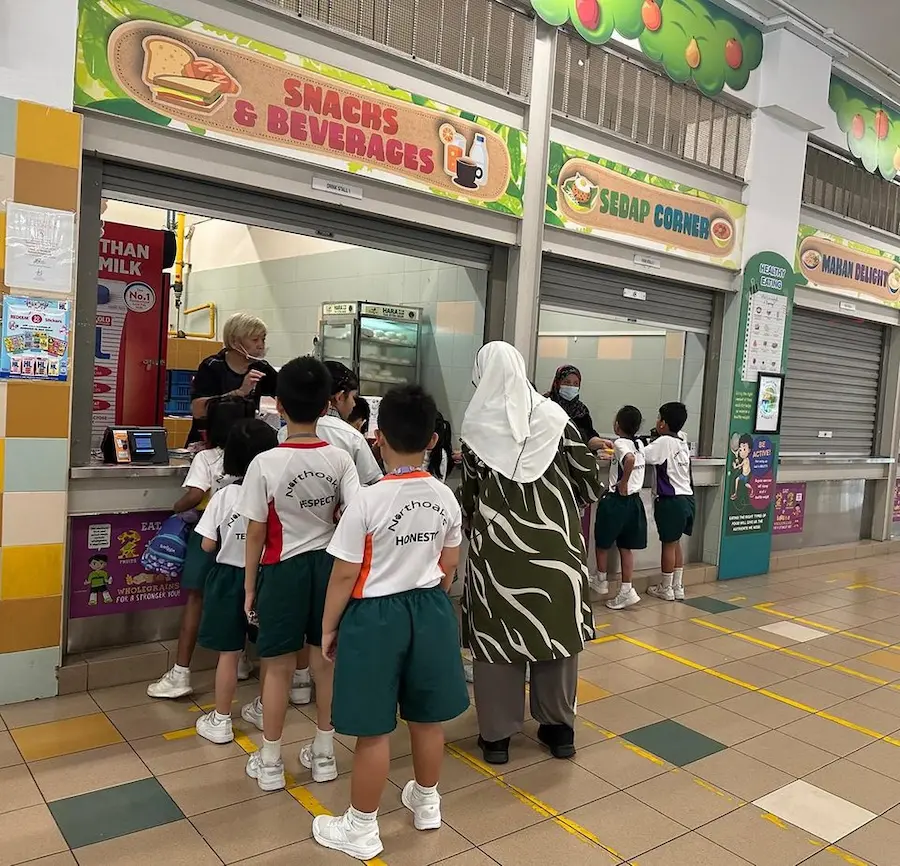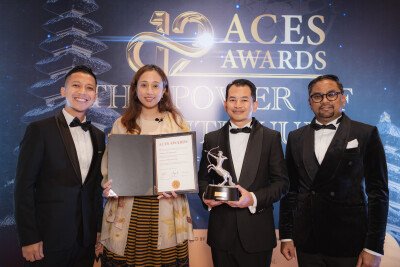Central Kitchen Meal Model: Singapore Schools Transform Food Service

Photo Credits: https://cassette.sphdigital.com.sg/
Singapore’s educational landscape is witnessing a significant transformation in how students receive their daily meals. The Central Kitchen Meal Model for Singapore schools initiative represents a strategic response to mounting challenges in traditional canteen operations, with thirteen institutions set to pioneer this innovative approach from January 2026.
The Shift from Traditional Canteen Operations
The traditional school canteen model, which has served Singapore students for decades, faces unprecedented challenges that threaten its sustainability. Approximately 40 schools across the nation currently struggle to secure adequate stallholders for their canteen operations. This shortage stems from multiple factors, including an ageing workforce where many existing stallholders are approaching retirement age.
The financial pressures on canteen operators have intensified considerably. Rising ingredient costs, coupled with restrictions on price increases without school approval, create a challenging business environment. When goods and services tax increased from 8 to 9 per cent, some suppliers stopped serving canteen operators entirely due to unsustainable margins. Additionally, the implementation of home-based learning days has reduced the number of operating days, further straining the financial viability of traditional stall operations.
Understanding the Central Kitchen Model
The Central Kitchen Meal Model for Singapore schools system represents a fundamental departure from individual stall operations. Under this model, meals are pre-ordered by students approximately one week in advance and prepared at centralised facilities before being delivered to schools. This approach eliminates the need for multiple individual stallholders whilst ensuring students continue to receive nutritious, affordable meals.
The Ministry of Education has already successfully piloted this system at Yusof Ishak Secondary School, where it has proven effective. The model allows for better economies of scale, improved quality control, and more efficient resource utilisation compared to traditional canteen arrangements.
Implementation Timeline and Scope
From January 2026, thirteen Singapore schools will transition to the Central Kitchen Meal Model system. This phased implementation approach allows the Ministry of Education to refine processes and address any challenges before potential wider rollout across the education system.
The selection of these initial thirteen schools appears strategic, focusing on institutions that have experienced particular difficulties in securing and retaining canteen stallholders. This targeted approach ensures that schools most in need of alternative solutions receive priority attention whilst providing valuable data for future expansion decisions.
Nutritional Standards and Quality Assurance
A critical aspect of the Central Kitchen Meal Model Singapore schools initiative involves maintaining and potentially improving nutritional standards. All meals prepared through central kitchens must adhere to Health Promotion Board guidelines, which mandate balanced diets covering the four main food groups: carbohydrates, proteins, vegetables, and fruits.
The centralised preparation model actually offers enhanced quality control opportunities. Health Promotion Board officers can conduct direct inspections at central kitchen facilities, which proves more efficient than monitoring multiple individual stalls across different schools. This concentrated oversight approach enables more consistent enforcement of nutritional standards and food safety protocols.
Central kitchen operators must employ qualified nutritionists to design menus that meet educational nutritional requirements. For instance, deep-fried dishes are eliminated from school menus, and healthier alternatives such as wholegrain pasta replace regular options. The system also incorporates regular menu rotation to prevent menu fatigue whilst ensuring nutritional variety.
Economic Benefits and Cost Management
The Central Kitchen Meal Model Singapore schools approach offers several economic advantages over traditional canteen operations. Centralised procurement enables bulk purchasing, which typically reduces per-unit food costs. Additionally, the model eliminates food waste issues that plague individual stall operators who must prepare meals without knowing exact student preferences or attendance.
Canteen stallholders in traditional models face significant challenges with unpredictable demand. They cannot accurately forecast whether students will choose their offerings over competitors, leading to either food shortages or excessive waste. Central kitchens address this through pre-ordering systems that provide precise meal quantities required.
The economic sustainability extends to reduced operational overhead. Rather than maintaining multiple cooking facilities across individual stalls, schools can operate with streamlined food service areas that require minimal staffing for distribution rather than preparation.
Supporting Displaced Stallholders
The transition to Central Kitchen Meal Model Singapore schools acknowledges the livelihoods of existing canteen operators. The Ministry of Education has committed to supporting affected stallholders through referrals to nearby schools with vacant positions or employment recommendations with central kitchen operators.
This approach recognises the valuable experience and expertise that existing stallholders possess whilst providing them with alternative employment pathways within the evolving food service landscape. Some established operators may find opportunities to expand their operations by becoming central kitchen suppliers, potentially serving multiple schools rather than single locations.
Student Experience and Meal Variety
Contrary to concerns about reduced choice, the Central Kitchen Meal Model Singapore schools system can potentially offer greater meal variety than traditional canteens with limited stall numbers. Central kitchens can rotate through extensive menu cycles, providing different cuisines and preparations throughout each term.
Students maintain choice through the pre-ordering system, selecting from multiple daily options that cater to various dietary preferences and requirements. The system accommodates special dietary needs, including halal, vegetarian, and allergen-free options, more efficiently than individual stalls might manage.
The pre-ordering requirement also introduces valuable life skills, teaching students planning and budgeting as they make weekly meal selections. This educational component adds value beyond simple food provision.
Comparison with International Models
The Central Kitchen Meal Model Singapore schools initiative aligns with successful international practices. Countries such as Japan and South Korea have long utilised centralised kitchen systems for school meal preparation. In these nations, students consistently receive nutritious, freshly prepared meals that contribute to positive health outcomes and academic performance.
Japan’s school lunch programme, which serves millions of students daily through centralised preparation, demonstrates the scalability and effectiveness of this approach. The system ensures consistent nutritional standards whilst maintaining cultural food preferences and educational components around meal appreciation.
Technology Integration and Efficiency
Modern central kitchen operations leverage technology to enhance efficiency and maintain food quality during preparation and distribution. Advanced food preparation equipment enables consistent cooking standards, whilst sophisticated logistics systems ensure timely delivery to multiple school locations.
The integration of pre-ordering systems through digital platforms streamlines the entire process from student selection through preparation and delivery. This technological backbone supports the operational complexity of serving multiple schools simultaneously whilst maintaining individual student preferences and dietary requirements.
Future Expansion Considerations
The success of the initial thirteen schools implementing the Central Kitchen Meal Model Singapore schools system will likely influence future expansion decisions. The Ministry of Education has indicated that scaling depends on individual school needs and circumstances.
Schools with healthy numbers of operating stalls may continue with traditional models, whilst those experiencing stallholder shortages become candidates for central kitchen conversion. This flexible approach allows the education system to maintain diverse food service models based on practical requirements rather than implementing uniform changes across all institutions.
Addressing Potential Concerns
Some stakeholders express concerns about the Central Kitchen Meal Model Singapore schools approach potentially reducing the personal connection between students and canteen operators. Traditional canteen aunties and uncles often form meaningful relationships with students, providing social interaction beyond mere food provision.
However, the model does not eliminate all human interaction. Distribution staff at schools can maintain personal connections with students, whilst the improved meal quality and variety may enhance overall student satisfaction with school food services.
Food safety represents another consideration, as centralised preparation could potentially affect larger numbers of students if problems occur. However, the enhanced oversight capabilities and professional kitchen standards typically associated with central facilities may actually reduce food safety risks compared to numerous individual stall operations with varying standards.
The Central Kitchen Meal Model Singapore schools initiative represents a pragmatic evolution in educational food services. By addressing current challenges whilst maintaining nutritional standards and student choice, this system offers a sustainable path forward for school meal provision. The careful implementation approach, beginning with thirteen schools in January 2026, demonstrates thoughtful change management that prioritises student welfare whilst adapting to contemporary operational realities.
As Singapore’s education system continues evolving to meet modern needs, the central kitchen model exemplifies innovative solutions that preserve essential services whilst embracing efficiency and quality improvements. The success of this initiative may well influence food service approaches in educational institutions throughout the region and beyond.

Lens Technology Donates HK$13.1 Million in Aid Following Devastating Tai Po Fire

Commerce Dot Com Celebrated As One of Asia’s Inspiring Workplaces At ACES Awards 2025

Thai SELECT Festival Presents "The Savory Thai SELECT Night Market" and Delights Los Angeles with an Authentic Taste of Thailand

How Spoofing of Singapore Government Agencies Fuels Scams

2025 Year-End Bonus for Civil Servants in Singapore Hits Record High

Viral Helium-Filled Balloon Drink Takes Singapore by Storm

Blackpink Supertree Grove Light Show Is Free This November

Lens Technology Donates HK$13.1 Million in Aid Following Devastating Tai Po Fire

Commerce Dot Com Celebrated As One of Asia’s Inspiring Workplaces At ACES Awards 2025

Thai SELECT Festival Presents "The Savory Thai SELECT Night Market" and Delights Los Angeles with an Authentic Taste of Thailand







